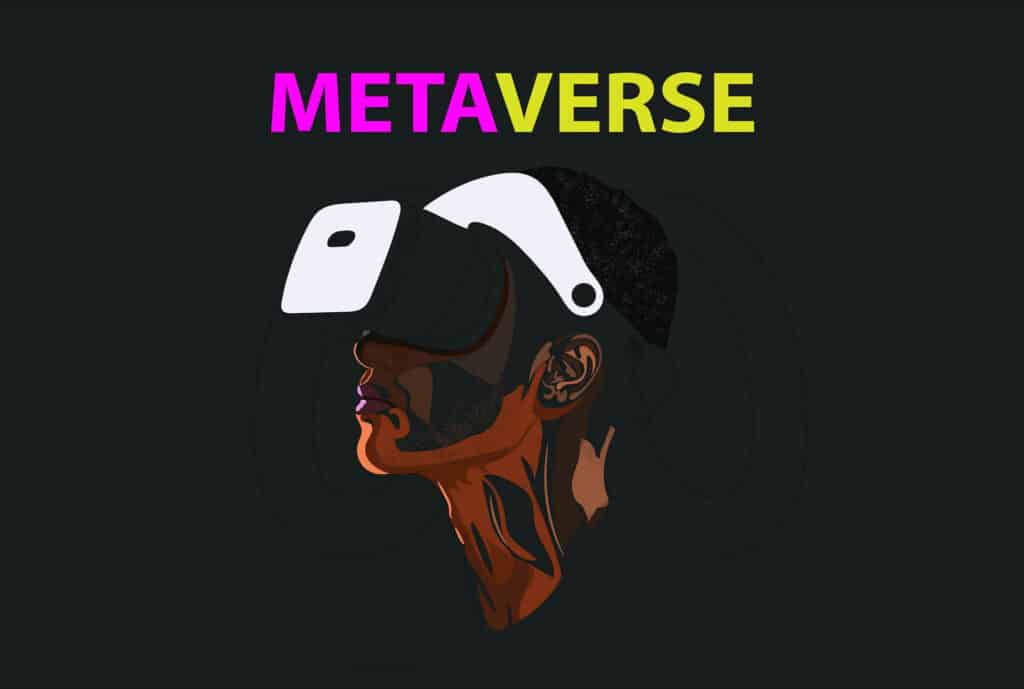The Beginnings
Facebook’s recent rebranding as Metaverse (Meta) has made the concept popular, but the term existed long before this. “Metaverse” is first mentioned in Neal Stephenson’s novel Snow Crash. The story depicts a virtual reality world run by a monopoly corporation that wants to control the lives of the service users.
Social media has proven to be an excellent tool for businesses to find new customers, promote sales and build trust and loyalty with customers. Mark Zuckerberg’s focus on Metaverse aims to take us to the next level of an internet that works in virtual reality. Users can work and play in the online virtual world and, through it, connect to each other, to products and games in a more immersive way than ever before.
What Technologies Make Up the Metaverse
The Metaverse consists of interconnected virtual worlds that exist even when there are no users online. Users can connect to these worlds with virtual or augmented reality glasses, for example. In virtual reality, the user is fully immersed in the virtual world, and in augmented reality, the virtual world is drawn into the normal world, allowing the user to navigate both simultaneously.
The Metaverse also includes a digital economy where users can create, buy and sell goods. In futuristic scenarios, the worlds would be so compatible that users could take virtual objects, like clothes or vehicles, from one platform to another. In the real world, you can buy a shirt in a shopping centre and then wear it in a cinema. Currently, most platforms have virtual identities, or avatars, that are tied to only one platform, but the Metaverse can allow you to create a personality that you can bring anywhere as easily as you can copy your profile picture from one social media to another.

The Role of Transparency
In the “rules of the Metaverse”, Tony Parisi says that the Metaverse should be an open source project built for everyone without anyone controlling it. The current Internet works with these rules, and since the Metaverse is a more immersive version of it, it should therefore be built on similar foundations.
It would be important for business owners and decision makers to understand the technologies that are driving Metaverse forward and what impact they may have on the users, the environment and our society. By understanding these technologies, companies can find new ways to enrich our society through the constructive uses of virtual reality connectivity that develop our world and keep the digital economy thriving.
Nature of the Metaverse Content
Understanding the technologies that enrich the Metaverse is in the interests of companies, as they can bring benefits to the business, such as a better customer or user experience, more efficient processes, better security and more immersive entertainment.
Companies also need to understand that as the Metaverse landscape evolves, the nature of the content will also change. Creating quality content marketing strategies with these immersive virtual environments in mind is essential as the industry progresses.
At its core, the Metaverse is defined by being an immersive experience for users, and this would not be possible without AR and VR technologies. The terms Metaverse and VR are often used interchangeably, but there are differences. The Metaverse is meant to be an interconnected VR experience. When the user accesses the Internet communities in the form of an avatar, the definition of Metaverse is met. In the future, the Metaverse may expand to other futuristic technologies. AR and VR are the cornerstones of Metaverse projects. Augmented reality systems use three elements together: real and virtual environments, real-time interaction and accurate 3D visualisations.

Ethics and Responsibility
If we consider technologies ethically and responsibly, we can find ways to truly help customers by growing their business. These technologies aren’t meant to replace the real world, but instead expand the understanding of the internet and share experiences in ways that weren’t possible before.

